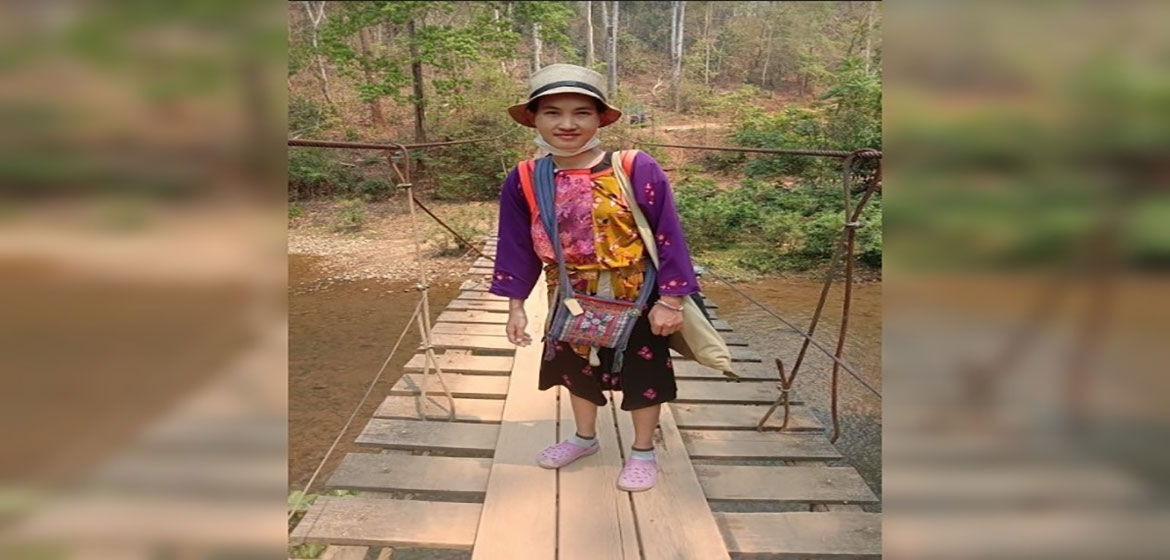Katima Leeja, a 35-year-old Lisu woman human rights defenders from Chiang Dao District, Chiang Mai Province, was visited by a plainclothes military officer on Saturday evening around 4 pm of 9 May 2020. The plainclothes officer, who was from the 4th Cavalry Regiment in Chiang Mai, said that he was told by his higher up to inquire about information about Katima. The incident took place a week after eight Wildlife Sanctuary Inspector Officer got involved in land disputes with 3 villagers and allegedly hit a 55-year old Lisu man in the head during the confrontation in Chiang Dao Wildlife Sanctuary zone on 2 May 2020.
Later, Katima as a coordinator of the Lisu Network of Thailand was seen in a video uploaded on Facebook on Tuesday, 5 May, where she was reading out a statement by the Network, criticizing such action by the authority and demanding it to be investigated by a committee. On Thursday, 7 May, she and about 30 villagers submitted a letter to Chiang Dao Chief District Officer at Chiang Dao District Office, demanding that the investigation committee be set up to look into the incident and that the authorities conduct a proper survey of the land to clarify the land use area to avoid further conflict.
During the house visit, the plainclothes military officer told Katima there was no specific reason for the inquiry, but said that he was asked by his supervisor to inquire information about Katima. He said that the supervisor earlier called her but she did not pick up the phone, therefore he had to pay her a visit.
He asked how Katima came to be involved in human rights work relating to land rights and indigenous people’s rights. The officer also asked Katima information about her birthday, marital status, phone number, members residing in the house, her parents and siblings’ name, and their occupation. The visit lasted about 30 minutes.
Katima said that the visit was the first time she ever received an obvious threatening act from the authorities. After the visit, she and her family members feel concerned about her safety as she is an ethnic minority group. In recent years, there have been various cases of enforced disappearance or extrajudicial killing against vocal indigenous human rights defenders, such as the case of Billy Rakchongcharoen, a prominent Karen HRD who disappeared in 2014 and later whose body was found in 2019.
“I feel quite concerned and so are my family members to receive such a visit. It feels strange that he asked me a lot of questions. Now it made me think twice if I have to go anywhere by myself. Of course, I don’t want to be the second Billy,” said Katima
The military officer, who refused to identify his name, explained to PI on the phone that the visit was supposed to be only “casual” and “friendly” and not meant to be threatening in any way. He said he was not aware that the inquiry has anything to do with the Katima’s action protesting the forest authorities, and that he only followed his higher up’s order to get the information. Such visit is common for the soldiers who go and talk to the villagers on a regular basis, which is meant to be for friendly exchanges, he said.
Katima, who received a recognition and award from the National Human Rights Commission as the outstanding women human rights defender in 2017, started her human rights defenders work as her father, a Lisu community leader, was shot to death in 2012 in the case relating to land disputes and discrimination against the indigenous people.
Protection International, Thailand would like to emphasize that States have a responsibility to pledge protection to WHRDs at risk and should be held accountable for fulfilling this responsibility.
We also would like to highlight the necessity to progress an included concept of security that goes beyond just the physical protection of the individual.
Such a notion of security would encourage the expansion of prevention measures and take into account the need to feel safe at home, at community and in public, as well as integrating the physical and psychological well-being of WHRDs, families and their groups.
Correspondingly, we echoed the need for protection methods and platforms to take into account the economic, historical, cultural, political, and social contexts in which WHRDs live and address their specific needs and realities.
Source:
Related to SDG 10: Reduced inequalities, SDG 16: Peace, justice and strong institutions and SDG 5: Gender equality



